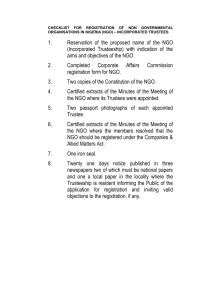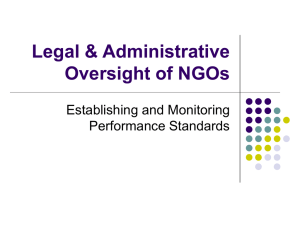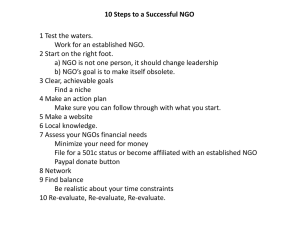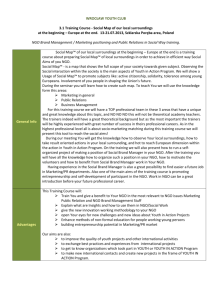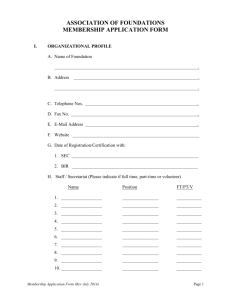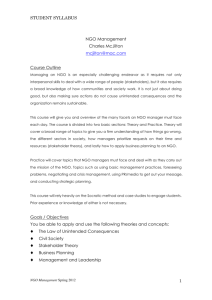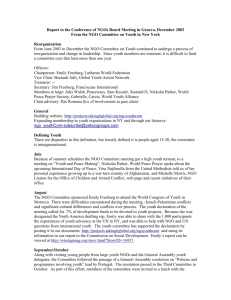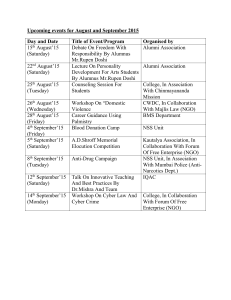Health, Gender and Poverty
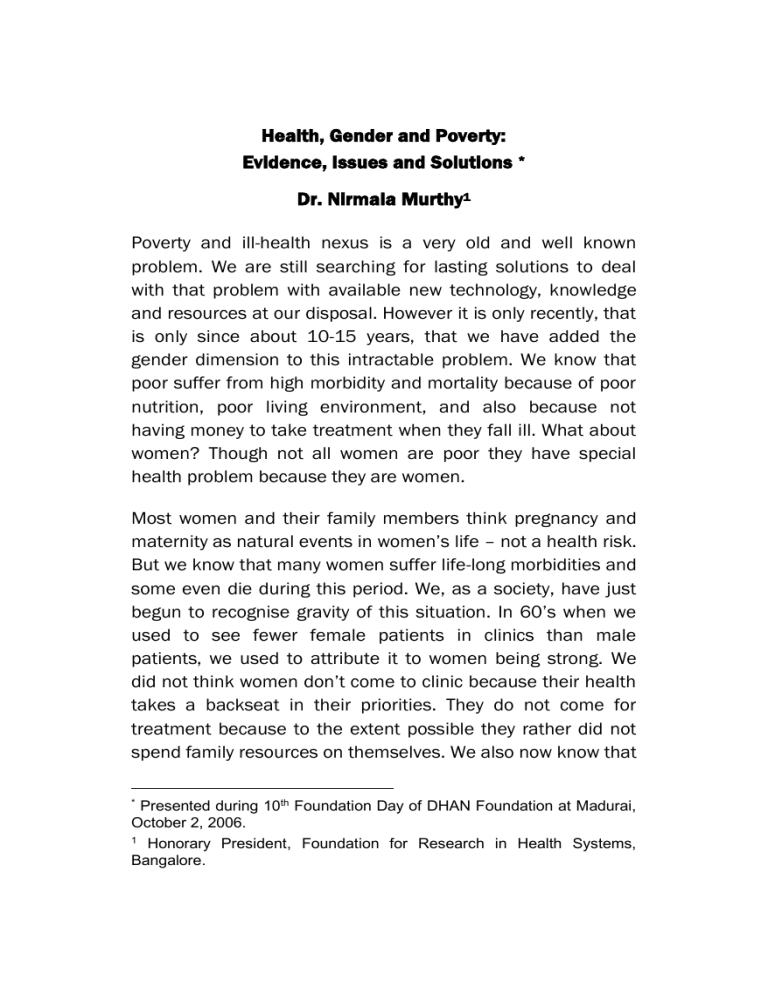
Health, Gender and Poverty:
Evidence, Issues and Solutions
*
Dr. Nirmala Murthy
1
Poverty and ill-health nexus is a very old and well known problem. We are still searching for lasting solutions to deal with that problem with available new technology, knowledge and resources at our disposal. However it is only recently, that is only since about 10-15 years, that we have added the gender dimension to this intractable problem. We know that poor suffer from high morbidity and mortality because of poor nutrition, poor living environment, and also because not having money to take treatment when they fall ill. What about women? Though not all women are poor they have special health problem because they are women.
Most women and their family members think pregnancy and maternity as natural events in women’s life – not a health risk.
But we know that many women suffer life-long morbidities and some even die during this period. We, as a society, have just begun to recognise gravity of this situation. In 60’s when we used to see fewer female patients in clinics than male patients, we used to attribute it to women being strong. We did not think women don’t come to clinic because their health takes a backseat in their priorities. They do not come for treatment because to the extent possible they rather did not spend family resources on themselves. We also now know that
* Presented during 10 th Foundation Day of DHAN Foundation at Madurai,
October 2, 2006.
1 Honorary President, Foundation for Research in Health Systems,
Bangalore.
even health providers take women’s health problems more lightly than they should. If a man and a woman approach a doctor with the same cardiovascular symptoms, the man is likely to undergo a battery of tests while woman would be sent home with assurance that she was just bit tense. These are gender dimensions of health - very different from the poverty dimension.
What happens when poverty and gender issues, a disastrous combination, come together? How to deal with that combination? How feasible are the solutions? These are the questions we would be briefly touching upon in my talk today.
Why are the poor vulnerable?
Poor people in India are highly exposed to double burden of health risks. They carry disease risks of the poor such as TB, malaria and other communicable diseases. They also are at risk of diseases of the rich such as diabetes, heart diseases and cancer. Therefore they need both, the primary and preventive care as well as the tertiary and curative care that they can afford. But they do not have both in adequate measures in spite of the impressive health infrastructure that the government of India has created over the past 30-40 years ostensibly to serve the poor and the equally impressive private sector health infrastructure that sprang-up in response to the huge demand for health care services in the country.
Public services, which are free for the poor, are poorly staffed and equipped and therefore cannot provide good quality services to the poor. Private services are too expensive for them. They therefore resort to care in the unregulated informal
sector, which is of questionable quality, which makes them vulnerable to higher health risk.
What do the poor need?
Poor people do not expect health services to be free for them everywhere and all the time. But they expect essential health services to be made available at a price they can afford. They want a health system that respects them and is accountable to them. They need protection from adverse impacts of economic policies that push costs of drugs and food items up.
Recent economic reforms in India have ushered in market economy in all sectors, including health. The reforms no doubt, have helped stimulate the economy in general but the benefits have not accrued uniformly at everywhere and to everyone. Urban areas have benefited more than the rural areas; Southern states have benefited more than the Northern
States; rich have benefited far more than the poor.
Consequently, health inequities have also increased between the poor and the rich, between the urban and rural areas and among states in India. While Kerala and Tamil Nadu have reached a very low level of infant mortality and replacement fertility, health situation in some 170 districts is very grim.
Some of them are no better than some war-torn African countries. Bangladesh has lower fertility and maternal mortality than the All India average. India and Afghanistan are the only two countries in the world that have female life expectancy lower than the male life expectancy.
Recognizing that poverty leads to ill health and ill-health leads to more poverty, governments of highly-indebted poor
countries around the world have adopted the United Nations
Millennium Development Goals (MDG) in which health figures in most prominently. United Nations General Assembly accorded the highest priority to reaching health services to the poor in the form of infant and child health, reproductive health, nutrition, treatment for malaria, tuberculosis, and prevention of HIV/AIDS, as a part of countries’ poverty reduction strategy.
Health initiatives in India
India, along with most countries around the world, adopted the Alma-Ata declaration in 1978 which called for, “Health for
All by the Year 2000”. Subsequently, the National Health
Policy of 1983 supported a massive expansion of rural health infrastructure – from village to district level. Unfortunately much of that infrastructure remained under-utilised to-date because of problems like poor maintenance of facilities, nonavailability of staff, and inadequate supply of medicines etc.
The National Health Policy of 2002 therefore set out to take corrective actions for those problems.
This policy talked about promoting public health as a discipline, reviving licentiate medical practitioners to fill the staff vacancies, involving panchayat raj institutions in planning and monitoring health programs, partnering with NGOs in service delivery, regulating private sector and increasing government’s health budget to ensure adequate supplies and maintenance.
These actions are consistent with the recommendations of the
World Development Report of 1993, which had supported public financing of essential clinical services for the poor as a
way of reducing poverty. But it had also recommended that instead of government directly providing services to the poor, it should use public funds to provide subsidies to nongovernment organisations that serve the poor or to use voucher system to give the poor choice of service providers.
Global Experience of Successful State Interventions
There is a considerable global experience to show that near universal access to health care can be achieved by financing clinical services through social insurance that is either publicly managed or heavily regulated by governments. The service delivery structure should be inclusive of both public and private services. There should be a monopoly buyer of health care, preferably a community-based organisation who would manage care in the interest of its clients.
In the early 80’s OECD countries were facing similar problems as India. The problems were: inequitable access to health care services, rapid increases in healthcare costs, inefficiency in the system, poor quality of services etc. To some extent, those problems had arisen because of flaws in the financing and regulatory systems. There were widespread call for privatisation but no country reduced its commitment to public health care. Instead they embarked upon reforming their financing and regulatory systems. Today, these counties have achieved near universal healthcare coverage through compulsory social insurance, capped third party payments and global budgets.
China also faced the same problems after the collapse of the commune system and the disappearance of “bare foot doctors”. As the new market based health delivery system
came into existence studies showed that poor peasants were left high and dry in the plethora of services being provided because they could not afford their costs.
To address this problem, China designed a system called
Cooperative Health Care Network. This network operated at a township level and provided basic package of services to all uninsured people. All participants in the network, except those below the poverty line, paid a certain premium whose level was determined as a percentage of their individual net income. In return, each participating household received a health care security card that detailed out the type and number of services the household would be entitled to in the year. Unused portion of the allotted amount was partially carried forward to the next year and partially used to cover excess services used by other households.
To manage this network, a Health Security Management
Board was formed in each township. This Board entered into contract with township health centres for specific quantity and quality of services per year and disbursed funds accordingly.
For villages that did not have health centres, Board used private practitioners or volunteers to fill the provider gap.
Resources to finance this system came from individuals, local industry and government grants. Funds thus collected varied from town to town depending on local income levels and on capacities of local businesses to contribute. The gap, which was usually 20-25 percent, was made-up by government grants. The network’s sustainability was ensured since a major part of the contribution came from users of the system.
India finances public health services through her general revenues. Insurance schemes both social and private type, cover only a very small portion of health care cost. That would have hardly mattered if the public service were really free for the poor as they were supposed to be. Studies on the contrary have shown that the poor do not get free services; they in fact bear disproportionately higher burden of healthcare spending than others do.
That is because across board, more than 80 per cent of illness episodes treated as outpatient care requires out-of-pocket expenditure. When it comes to inpatient care, economically well-off people use disproportionately more of public sector facilities, reducing poor people’s access to those facilities. The poor either resort to private sector by incurring loans or get no care at all. Our recent study on health care seeking behaviour of Kalanjiam Foundation members has shown over-use of private care even for minor ailments at twice the cost compared to at government facility. Over-use of private care and high-cost of drug seem to be two problems that poor people suffer from.
Reaching healthcare to Poor
There have been several reform attempts in India and elsewhere, both in government and NGO sectors that tell us what works and what does not, in providing health care to the poor.
One policy that seems to work better than giving free care is to allow primary care facilities to retain user charges and spend them for drugs, supplies and incentive bonuses for health workers. In Cameroon for example when user fees were
introduced in a group of rural health centres, their utilisation by the poor actually increased substantially.
Another policy that seems to work is to get economically welloff users to cross-subsidise services for the poor. This policy is different from insurance schemes in which persons with low health risks subsidize health for those with high risk. The idea of cross-subsidy has been effectively used in many NGO programs. One very shining example of it is Aravind Eye
Hospitals in Madurai, whose 600-bed free hospital is fully subsidised by its 400 paid-beds. While all patients get high quality technical services, the paid patients get more amenities. The hospital also follows self-targeting system. that means patients get to decide whether they should seek free or paid care.
Several NGO programs have demonstrated that integrated preventive and curative care that includes access to nutrition, water supply, sanitation, information, preventive care and curative treatment, results in substantial health gains for the poor. But a practical problem in providing such a package of services is non-availability of healthcare providers and competent program managers willing to serve in remote, backward areas. From time to time, government has tried to meet this staff requirement by making one-year rural service compulsory for medical graduates but that has not been a satisfactory solution. It does not guarantee their performance.
The new health policy envisages entrusting difficult-to-reach areas to “limited health functionaries” like nurses, licentiate medical practitioners and to NGO functioning in those areas.
Pitfalls in the system
Notwithstanding these policy level efforts, the two main pitfalls affecting our ability to reach services to the poor are: (i) corruption and (ii) negative attitudes of health staff towards the poor. Many studies have documented that workers extract money from poor tuberculosis patients to give them a sputum cup, to provide them a bed at hospital, sometimes even to allow them to see their newborn babies. The poor therefore prefer the paid private services to the free public service. Staff in public health facilities often behaves as if people have no right to expect good behaviour because they are getting free services.
Another pitfall in the system is that though the public services are meant for the poor it has no mechanism to target them.
The three mechanisms to target the poor are: (1) assessing individuals on the basis of their income, which is both difficult and costly; (2) offering only certain types of services free that the poor need most (examples: treatment for TB, leprosy, under-nutrition etc) but that leaves out many services that both poor and non-poor need equally; (3) offering free services to easily identified subgroups like those living in low-income regions, socially disadvantaged groups or women and children. Women and children are disadvantaged groups because they are diverse with little political clout. Hence various funding agencies are now focusing attention on these groups and looking up to NGO sector to help target them for services.
Scope for involving NGO sector
NGO sector accounts for a significant share of health services in many developing countries, but not in India. Yet, by and
large, this sector enjoys good reputation for efficiency and service quality.
The Rural Cooperative Health Care Network in China, for example, is a form of partnership between government and civil society in service delivery and management of the scheme. If it had been managed only by the state without involving the civil society this model might not have been as effective. Because when state provides both finances and services it cannot also ensure quality and service reach. NGO and private sector involvement is needed to share that responsibility.
NGO involvement is also very important when dealing with poor people because NGO usually ensure that poor people are treated with dignity and respect.
Health, Gender and Poverty
Recently in 2003, we synthesized the existing literature on poor women’s access and utilization of reproductive health services and concluded that measures to improve service quality will help women only to the extent that they are able to seek care. From poor women’s point of view quality means: physical access, affordability and effective treatment. Their ability to seek care depends on their awareness about health problem, familiarity with service providers and family/ financial support to seek treatment.
We arrived at those conclusions based on data from four districts of Karnataka and Rajasthan where we interviewed about 900 poor and non-poor women who had experienced various reproductive health problems such as abortion,
Reproductive Tract Infections (RTI) just then. Through these interviews we tried to find out differences in their experiences in the quality of care they received and the treatment effectiveness. We found some very interesting differences.
We found that poor women preferred government services for pre-natal care and family planning not because those services were free but because women felt the services were good.
May be because for those services government workers had targets to fulfil and therefore they treated women with respect because they were helping to fulfil the targets. On the other hand for child birth, women preferred homes. That is not only because homes were convenient location but because many women apprehended un-necessary caesarean operation at hospitals to extract money from them. Fear of extraction was their constant worry about any treatment they sought at government facility. They reported preferring native medicine and faith healers because they believed in the treatment and felt safe from being exploited. Their family members also encouraged them to take services from nearby cheaper places than seeking the “best” care.
Non-poor women reported seeking treatment equally from private or government facilities for all types of reproductive health problems. They reported having family and money support. Their husbands and family members encouraged them to seek treatment from good doctor irrespective of distance and cost. They did not suffer as much from
“exploitation” syndrome because they usually knew a doctor or someone else at the hospital who would take care of them.
Poor women often expressed doubts about the quality of medicines they received or doctors’ diagnosis.
Poor women’s coping strategies were also therefore different from those of non-poor women. Most often, poor women took decision against doctors’ advice and accepted good or bad outcomes either as ordained or due to supernatural causes.
Non-poor women on the other hand usually complied with doctors’ advice, even sought second expert opinion, and in the case of adverse result, blamed the system (not their fate).
“The death was unnecessary”, they would say. Doctor could have done something to avoid it.
These differences tell us not only why poverty and ill-health go together but also where to intervene, if we want to.
Successful interventions
There are a large number of successful interventions, both in government and non-government sector, which have shown how to reach services to the poor and to women. For example, one NGO in Karnataka working in remote tribal areas has addressed the issue of non-availability of qualified service providers by drawing manpower from a large pool of medical interns and private practitioners. Jamkhed, Pachod, Search,
Karuna trust, Sewa-Rural and many others NGOs train dais and community health workers under medical supervision to the extent that they can provide services of quality that is as good as or better than a medical intern would provide.
Some interventions have tried to bring down drug costs to the affordable level by relying on WHO’s essential drug list, using
Locost drugs, and establishing village-level medicine depot through SHG.
Some NGOs, including DHAN Foundation, have successfully tested community insurance schemes for the poor. These schemes have worked well when a NGO is insurance provider and NGO or government is a service provider.
A way forward
From the vast literature that we reviewed, we were able to cull out strengths and weaknesses of various actors in the health field who can help to reach health care services especially to poor women.
Public health sector operates on a very large scale. It is resource rich and maintains certain competency standards.
However, because of corruption, its highly medicalized approach and insensitive behaviour towards poor clients, it pushes the poor away. Most of its health budget is barely sufficient to pay for the personnel cost. Much less is available to provide actual services.
Private sector is closer to the clients and is more acceptable to them. But it has limitations in terms of competency and accountability. Government partnering with private sector would help improve its accountability and competency and extend service reach to the maximum.
NGO sector has good reputation of providing health care to the poor but has a limited reach. NGO can be innovative, efficient and sensitive to the needs of the poor. In other words, it strengths lie exactly in areas where the government is weak.
Therefore, in a constructive partnership with NGO, government would be able to reach health services to the poor.
Poor women living in remote areas are especially at risk of falling pray to dangerous practices of unscrupulous “doctors”.
It is necessary to educate them about good medical practices, dangerous ones, as well as do’s and don’t about their own health.
In my 30 years of work experience in this field, I have learned that improving health especially of poor women is going to be a challenge in our resource-poor environment. But this challenge requires humane and managerial capacities as much or more as it requires financial and physical resources.
DHAN Foundation, I believe is well suited to provide to those critical inputs. I believe and expect DHAN to develop a practical and cost-effective model that will show the country a way forward.
